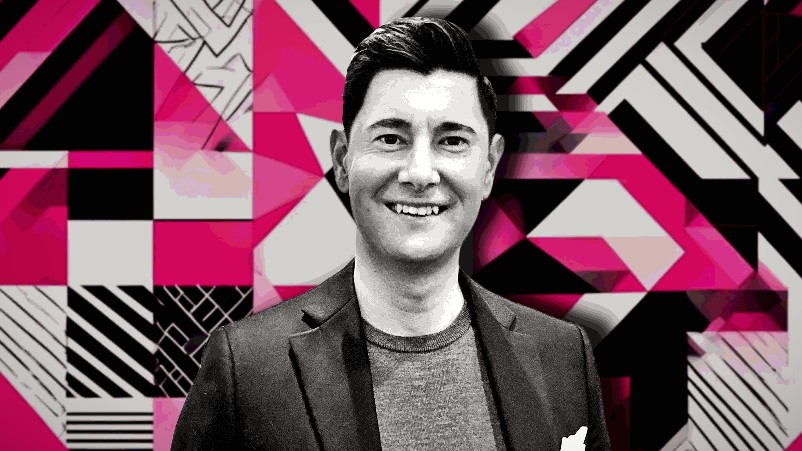Content marketing: How Coles and IAG are navigating the tsunami of mediocrity

Lauren Quaintance, Jill Tenner and Zara Curtis: Move faster, better.
Marketers are pouring money into content marketing as Covid crimps above the line options. Great news for the likes of News-owned content marketing outfit Storyation, whose Head of Content, Lauren Quaintance, says brands are rushing to build out content machines. But bad news for those marketers struggling to stand out in a sea of junk. So how are Australia's big brands cutting through? IAG's Director of Content & Customer Engagement, Zara Curtis, says she's become as much a content killer as content creator. Meanwhile, Coles' Senior Content Manager, Jill Tenner, is taking a smarter, post-Covid approach to reuse and recycling. All three think journalists have a bright future...
“Everyone likes to be called a content creator, but I would rather be called a content killer. I think what you don't publish is the art of content marketing.”
72 per cent of marketers plan to increase spend on branded content over the next 12 months, according to a poll conducted in the US by Sirkin Research and NewsCred.
The options available to marketers in a post-Covid world have diminished as out of home, cinema, and events have significantly reduced or paused entirely.
As a result, those without content marketing strategies are “scrambling” to build them to keep customers engaged during a period where hard selling may not be wholly appropriate, according to Storyation head of content, Lauren Quaintance.
That surge risks adding to the already highly polluted waters of social media. There are oceans, entire trash island archipelagos, of garbage out there.
As one high-ranking content marketer told me last week: Open up Facebook and you're awash with mostly crap content, horrible stuff. Content marketing as a whole seems to be the opportunity for marketers to make very cheap ads, because they only spend very cheap media dollars promoting it.”
There are also some very good content marketers out there. But if the biggest challenge for brands is to stand out amid the noise, it’s about to get a whole lot noisier.
So what do the professionals do now?
Less is more
Zara Curtis was hired in 2018 to build out IAG’s content marketing unit. She now has a team of 12. Despite that firepower, Curtis says less can most definitely be more – especially during Covid.
“Everyone likes to be called a content creator, but I would rather be called a content killer. I think what you don't publish is the art of content marketing,” she suggests.
When Covid hit, IAG’s marketing team pared back, with a simple brand ad and messaging around the brand’s ‘help’ proposition. “Positive stories, letting people know we are there,” says Curtis. “We really tried to avoid ‘unprecedented times’ Covid comms language. We talked quite plainly and simply and held true to the brand of help that we have built.
“The other thing we really had to assess was, is it our role? You had a lot of people saying a lot of things that actually became noise in itself around Covid,” she adds. “So we pared that right back and really just communicated the absolute helpful essentials - and let the government and everyone else do their Covid comms.”
IAG had a dry run of how to communicate during a crisis, as Covid immediately followed the bushfires, during which IAG sent journalists into affected towns and regions “to tell stories from the ground and communicate help,” says Curtis.
“Halfway through Covid, we realised that the bushfire stories hadn’t gone away and that people needed positive news stories during lockdown.”
Curtailing output meant IAG could focus on producing fewer, better pieces of content.
“We latched onto World Koala Day and ended up producing a half hour TV show with Dr. Chris Brown that streamed live from Port Macquarie Koala Hospital, which we sponsor. And we produced a beautiful virtual school excursion, the first ever in the world, releasing the last koala from the bushfires,” she continues.
“So we managed to join our stories together and use Covid as context and create content for people that was relevant.”
The strategy appears to be paying off. Throughout Covid, IAG has increased engagement across owned and social channels by 42 per cent, claims Curtis, with sentiment “90 to 97 per cent positive” during Covid, “and we have been able to hold that, so we are really pleased.”
More is more
Cole’s business and breadth of product means its content naturally requires volume. Senior content manager Jill Tenner says it is often simple content that draws in punters – and during Covid, the retailer has “resurfaced” relevant pieces from its vast archive as people reacquainted themselves with the back of their pantry.
“We've been fortunate in that Coles has invested in content over many, many years. So our archive is quite extensive and we've been able to really pull that together in a way that reads the mood of the customer,” she says.
“Obviously, keep seasonality top of mind, but also with the economic overlay of customers potentially working reduced hours or going on furlough or forced leave.
“So we've been able to ensure we have the right content for customers and that we pick the right balance, hopefully, between inspiration and birthdays in isolation, to slow cooking to how to boil an egg, through how to cook rice,” says Tenner.
“It’s given us a great opportunity to resurface a lot of that archive and also to integrate it in conjunction with our catalogue, which has been a really exciting step forward to help customers find great value. To then pair it with recipe inspiration has probably been one of the real step changes for us in content marketing.”
The programme has also taken on a life of its own: Coles now has a community of 32,000 in its Cooking Club alone.
“Customers are sharing recipes and inspiration amongst themselves. And it's largely a member- and user-generated content platform. It’s a really authentic community,” says Tenner. “I think that that speaks volumes around how we're able to get our content right and build a community off the back of that.”
Meanwhile, its no frills, Covid production approach to TV with What's for Dinner, on Seven, shot by chefs on their iPhones, has given the evening news a run for its money in terms of audience share.
Both the TV show and the Cooking Club are feeding back into the retail sales machine.
“Organic is gone; it’s history for anybody who really is serious about the space. So if 72 per cent of marketers are going to increase their investment in content, they must think very hard about how they're going to approach the media spend to support that.”
Paid versus owned and earned
Creating content for owned websites and social channels is the essence of content marketing. But it won’t get far without paid media, according to Storyation Head of Content, Lauren Quaintance.
“Organic is gone; it’s history for anybody who really is serious about the space,” she suggests. “Organic performance is not a thing. The connection between paid-owned-earned is so crucial. The success of your content is very tightly connected to the size and scope of your media budget.
“So if 72 per cent of marketers … are going to increase their investment in content, they must dig down and think very hard about how they're going to approach the media spend to support that.”
IAG’s Zara Curtis agrees. “It has to be that mix between paid, owned and earned. We navigate those channels pretty evenly … and think of it as a united whole.”
Coles, though, has powerful tools at its disposal. It has the number one digital radio station in Australia and Covid’s impacts have played into the hands of those with strong digital retail and logistics capability.
The pandemic has brought home “the sheer volume of the opportunity of our own channels and the reach that we are able to get off the back of them,” says Tenner.
The plan now is to use paid media to drive more people to its new Coles & Co channel – which brings together recipes with weekly specials and the Coles catalogue, driving both engagement and sales.
“Channels or departments that haven't previously been exposed or had any responsibility for content are suddenly having to take ownership for how content is coming through. That's an interesting change. More and more channels are going to have to adopt a much greater focus on content, content amplification and making sure that they're part of the storytelling machine within the brand.”
Better tech stacks, more journos required
While Coles and IAG are happy with their strategies and output, both agree that they need greater resource, both human and technological.
Coles is taking a “newsroom” approach, to keep up pace with a fluid situation state by state and nationally.
“It’s still very new for us at the moment, we’re looking at how best to optimise ways of working and finding the right platforms to be able to do that,” says Tenner. “But we are moving quickly to be able to put the right processes in place to be as responsive as possible.”
IAG, meanwhile, will continue to use both internal and external expertise to drive its strategy. But Curtis stresses that good journalists and writers are key. “No matter what platform you are in, that is what makes great content – finding the angle, finding the insight – so we will continue to take a hybrid approach.”
Two years in, however, Curtis says her biggest challenge is technological – how to store and distribute content efficiently.
“It’s a big investment, we’re looking at products out there, like Lumi, like Adobe DAM, what they service and what they don’t,” says Curtis. “So ‘creation-to-publish’ is the next challenge for me. To be able to move fast, store it all and find and repurpose content; to make sure you've got that evergreen in the system, that everyone can see everything and you can do that quickly.”
Coles’ Jill Tenner says she faces a similar conundrum.
“We’re both in the same boat and it's obviously becoming more critical as the appetite for content grows,” and as brands need to serve up the “right content in the right format in the right channel.”
Meanwhile, as content becomes increasingly integral to marketing strategies, more business areas are being brought into closer contact with marketing.
“Channels or departments that haven't previously been exposed or had any responsibility for content are suddenly having to take ownership for how content is coming through,” she says.
“That's an interesting change within organisations, because content is becoming more of a recognised discipline within the marketing space. So more and more channels are going to have to adopt a much greater focus on content, content amplification and making sure that they're part of the storytelling machine within the brand.”
So how to cut the crap?
If all parts of the body corporate are to become fuel for the content machine, turning out greater volumes, faster, there is an even greater need to ensure they do not create an even bigger, uglier monster.
Storyation’s Quaintance thinks that is good news for those that can blend marketing and media skill sets. They will be in high demand.
“The two [disciplines] coming together is really the sweet spot. It's not just about journalists popping up in brands, it's not just about marketers doing content. We actually need to merge these two skill sets - that's where you can move faster but really keep an eye on quality.”
IAG’s Curtis agrees.
“The journalistic skill set is becoming more and more important in house. If you're not going to push crap out there, you really have to have it come from inside out - and then partner [with external providers] as well.”


